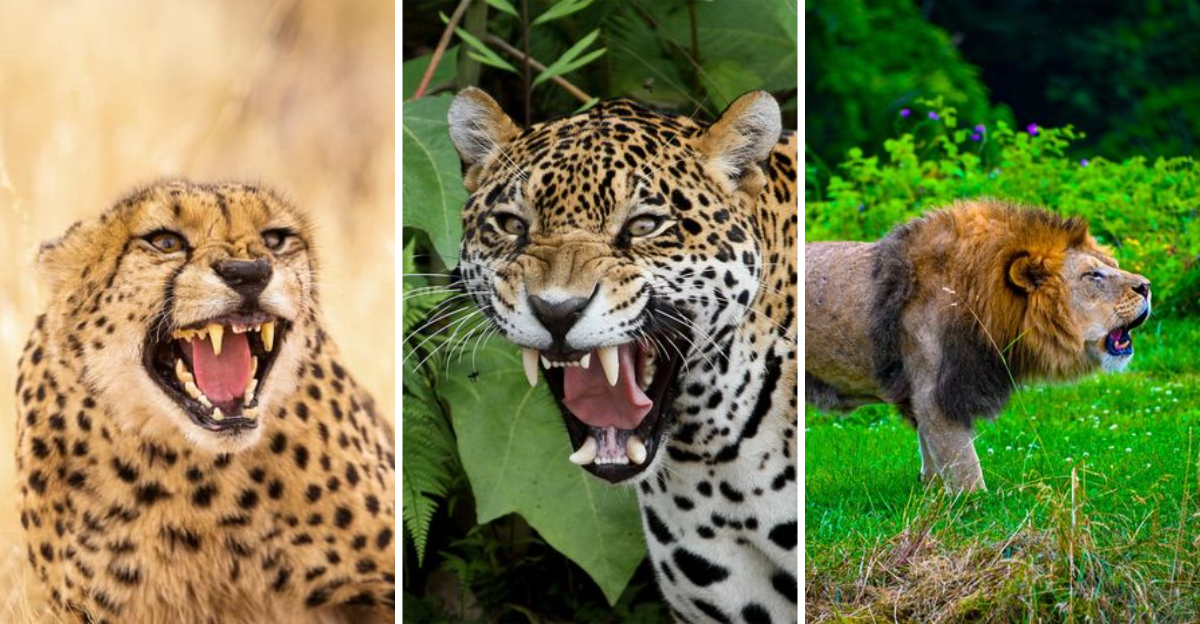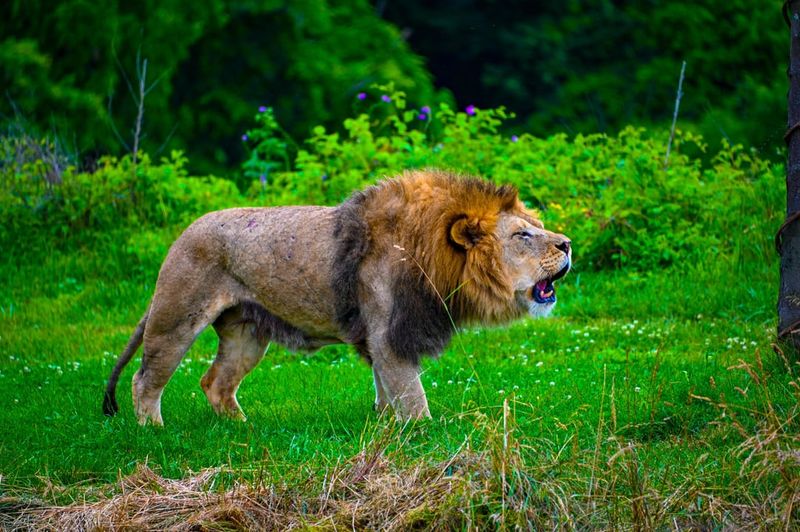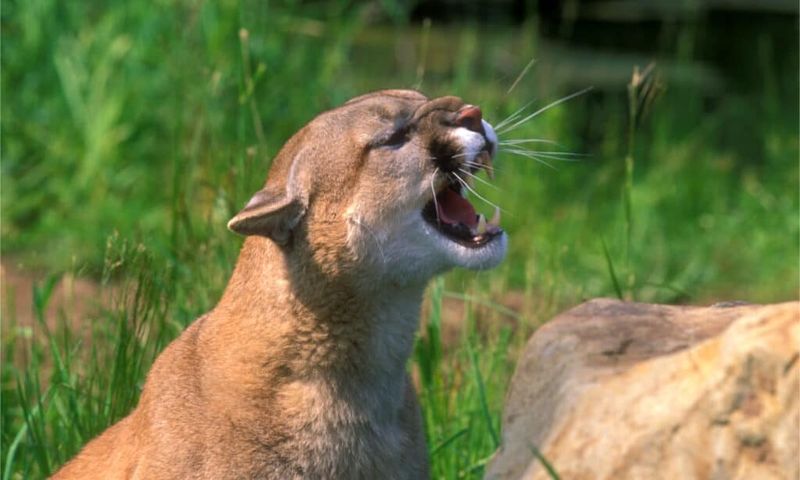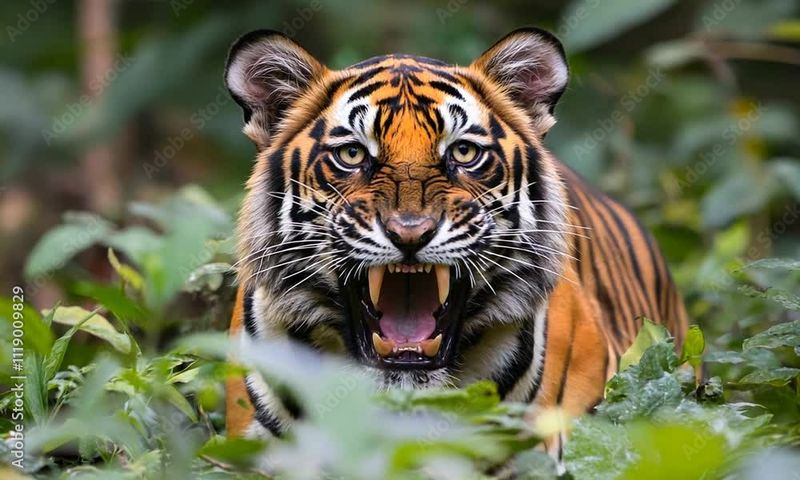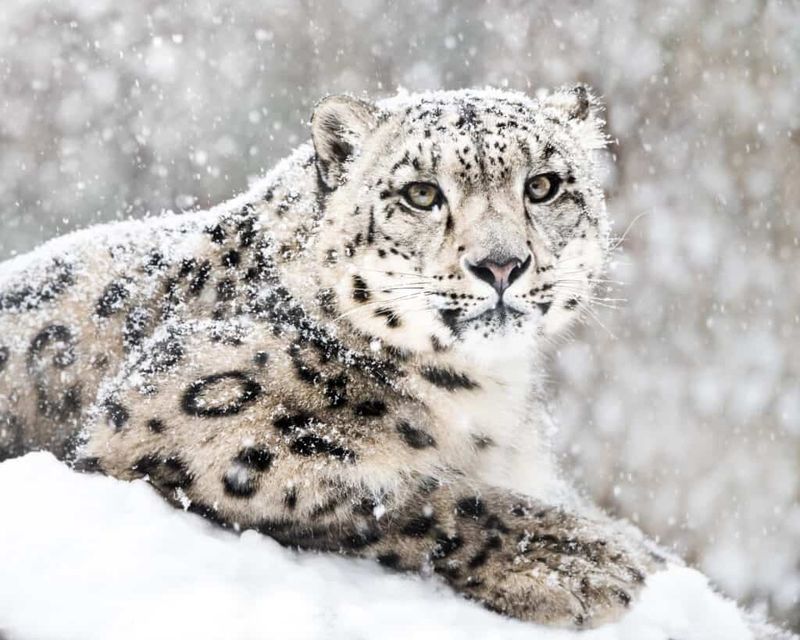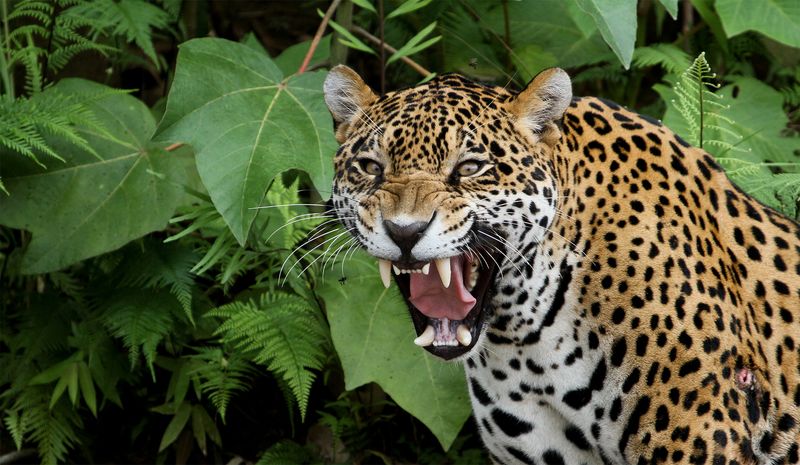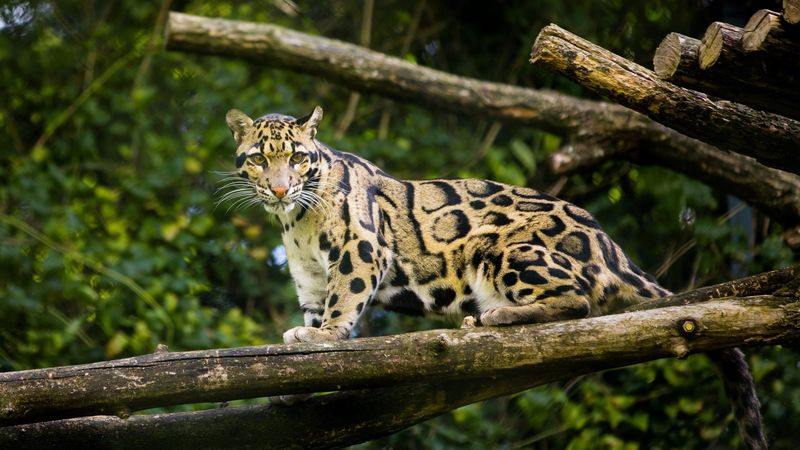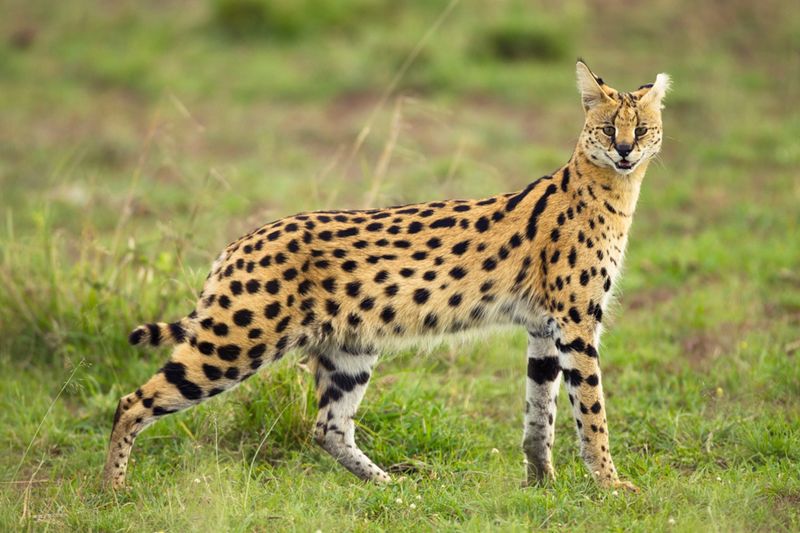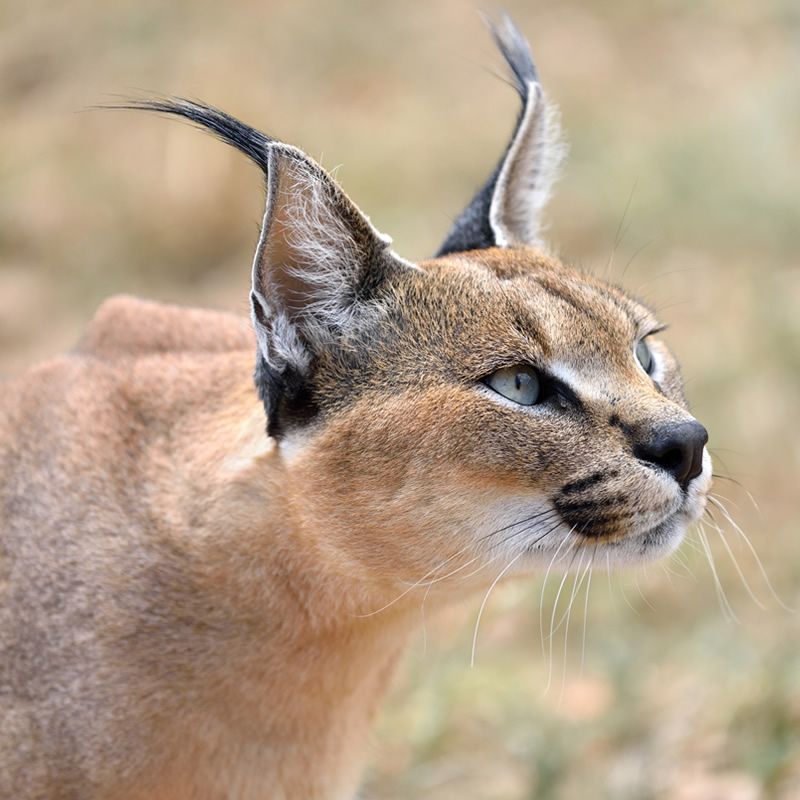📖 Table of Content:
Big cats possess not only physical prowess but also unique vocalizations essential for survival. These sounds coordinate hunts, establish territories, and communicate within species. Here’s a closer look at some remarkable big cats and their distinct hunting calls.
1. Lion
Known far and wide, the lion’s roar is a symbol of power and dominance. Echoing across the plains, this mighty call can be heard up to five miles away, establishing territory and conveying messages to pride members. Roaring is especially vital during night hunts, helping the pride stay coordinated in the dark. Each roar carries the identity of the individual, allowing lions to recognize each other’s strengths and positions. This vocalization is not just about might but also about unity and strategy, making the lion’s roar a versatile tool in the wild.
2. Cougar (Puma)
With an eerie scream that could be mistaken for a human cry, the cougar distinguishes itself in the animal kingdom. This haunting call can disorient prey, creating a moment of confusion that the cougar uses to its advantage. During mating season, these screams become a common communication tool, echoing through the dense forests. The ability to cast such an unsettling sound highlights the cougar’s adaptability and strategic use of its voice in both hunting and social interactions. It’s a call that captivates and confounds, ensuring the cougar remains a mysterious predator.
3. Leopard
The leopard’s yowl is a sound both unique and utilitarian, reminiscent of a saw cutting through wood. Using this call, leopards communicate across their territories, signaling presence and intent. During hunts, the yowl can divert attention, allowing these stealthy hunters to close in on their prey undetected. Each vocalization is a testament to the leopard’s cunning nature, blending its need for solitude with the necessity of interaction. It’s a call that serves as a bridge between isolation and connection, a hallmark of the leopard’s complex existence.
4. Tiger
The tiger’s growl, low and rumbling, is a sound that commands respect. This vocalization serves multiple purposes, from warning intruders to coordinating with cubs during hunts. The deep resonance of a tiger’s growl can precede a charge, acting as a prelude to its powerful presence. In the dense jungles, these growls become the tiger’s signature, a sound that signifies authority and strategy. Whether in moments of aggression or care, the tiger’s growl is an integral part of its identity, showcasing its dual role as a predator and protector.
5. Snow Leopard
In the cold, rugged mountains, the snow leopard’s ‘chuff’ or ‘prusten’ is a soft sound, yet it carries immense significance. Unlike the roaring of other big cats, this gentle vocalization fosters bonds between mothers and cubs and plays a role in mating rituals. The ‘chuff’ is unique in that it conveys affection and companionship, a rarity in the wild world of predators. It reflects the snow leopard’s introspective and nurturing side, highlighting how even in harsh environments, warmth and connection are vital for survival.
6. Jaguar
The jaguar’s vocalizations are as enigmatic as the dense rainforests it inhabits. Known for its guttural growls and deep roars, these sounds serve to mark territory and attract mates. Jaguars use their calls to navigate the thick jungle, communicating across distances that sight cannot traverse. Each growl is laden with intent and authority, emphasizing the jaguar’s position as a top predator. The nuances of their vocalizations reflect the richness of their environment, creating a symphony of sounds that resonate with the echoes of the rainforest.
7. Cheetah
In contrast to its silent sprint, the cheetah’s voice is a chorus of chirps and whistles. These high-pitched sounds help mothers maintain contact with their cubs amidst the African plains, ensuring safety and cohesion. Beyond familial communication, cheetahs use their vocalizations to express distress or call for assistance. The chirps and whistles carry over long distances, reflecting the cheetah’s need for speed even in communication. This vocal repertoire showcases the cheetah’s social dynamics, where sound plays a crucial role in the survival and success of these swift predators.
8. Clouded Leopard
The clouded leopard’s low moan is an intriguing sound that echoes through Southeast Asian forests. Unlike the aggressive calls of its larger relatives, this moan conveys a mix of curiosity and caution. It serves as a communication tool amidst the dense canopy, helping the clouded leopard maintain social bonds while exploring its environment. The sound’s gentle nature reflects the elusive and solitary habits of the clouded leopard, offering a glimpse into its secretive life. This vocalization is a reminder of the subtle ways big cats assert presence in their domains.
9. Serval
In the open savannah, the serval’s high-pitched call is a sound that cuts through the air with precision. These calls vary from chirps to purrs, each with a specific purpose, from attracting mates to signaling distress. The serval’s vocal prowess allows it to communicate effectively across the vast landscapes it roams. Its calls are a testament to the serval’s adaptability, using sound to enhance its hunting and social strategies. With a voice that matches its agility, the serval ensures its presence is both heard and felt in its habitat.
10. Caracal
The caracal’s vocalizations are as distinctive as its tufted ears. Among its repertoire is a barking call, used to communicate over long distances in the arid desert landscapes. This sound is both a warning and a greeting, showcasing the caracal’s adaptability to diverse environments. The barking call is an essential part of its survival strategy, enabling it to convey messages without revealing its exact location. The caracal’s voice is a versatile tool, demonstrating how sound can be as much a weapon as its sharp claws and swift movements.
